
 |
The photos on this page show close-up views of particular Machu Picchu structures and special places. (For more "wide angle" views, see the "Sectors" page or the "Panoramic views" page. And for a specialized type of close-up picture, see the "Windows and Doors" page.) I have tried to arrange these pictures in more or less the order they were taken, so you can move through them in sort of a tour of the complex, following our path. I hope by doing this, and with the help of our guidebook, to be able to give somewhat informed commentary on what the photos are showing. There were so many wonderful structures
This picture was taken before our Inka Bridge side trip, and thus must be close to the entrance to the complex, since the Inka Bridge Trail heads off before you really get into the main part of the site.
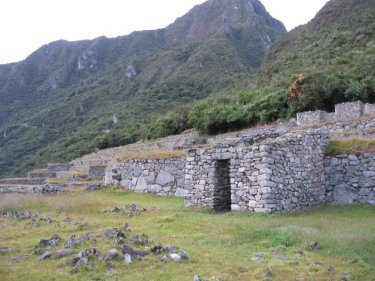
After returning from the scenic Inka Bridge hike, we began our exploration, under Hernán's expert guidance, of the main parts of Machu Picchu. Here are two pictures taken from where we entered the site. On the right you see piles of stones beside the walls. Hernán explained that these piles were the results of earth tremors bringing down some of the less-exquisitely crafted walls over time, probably in less important sectors of the complex.
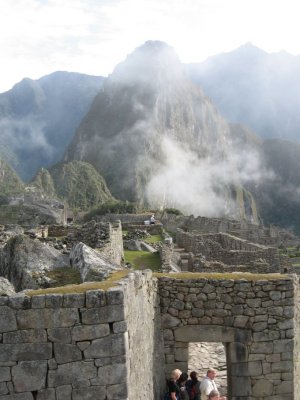 |
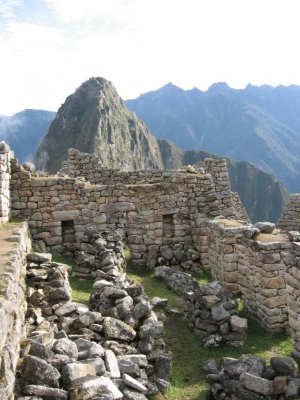 |
Further along the west side of the complex are the highest parts of it, which are believed to be sites of sacred ceremonies. The highest point in Machu Picchu is the Intiwatana stone, shown at the left here. It is reached by climbing up the steps shown at the right, which run alongside a series of terraces.
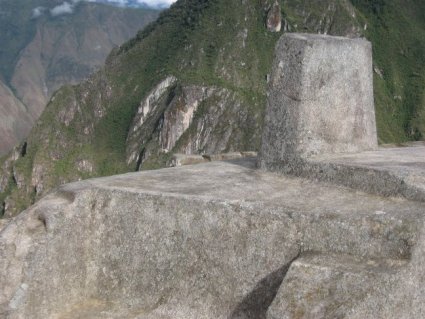 |
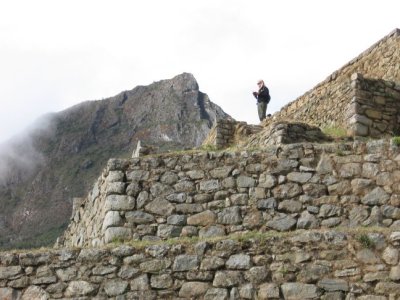 |
Here are three shots of a remarkable wall that subsided during Inka times. It's remarkable because normally Inka foundations just don't subside. Archeologists believe that this area is an unfinished temple. You can see the high point described above in the background of these photos.
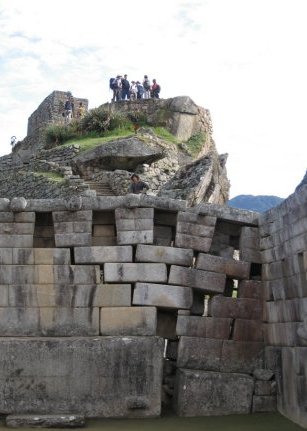 |
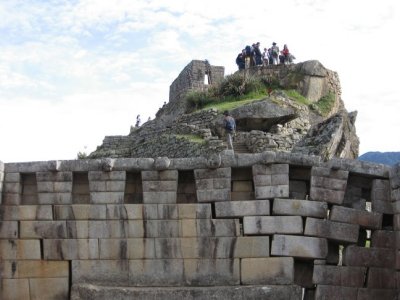 |
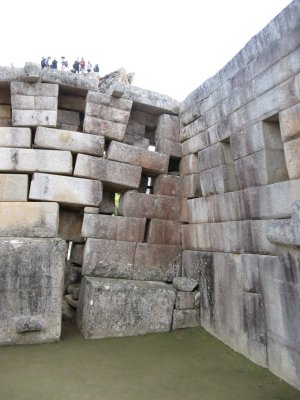 |
Another wall of the unfinished temple is formed by these beautiful windows:
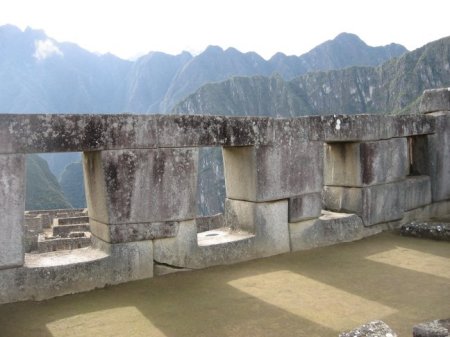
The area shown in the photo below was taken, I believe, in a quiet little spot just off the busy Sacred Rock area (see below). But I was unable to find it described in the guidebook.
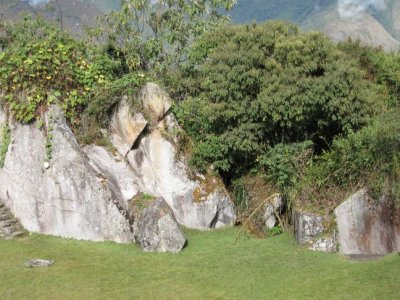 |
Here are two photos of the Sacred Rock, which was carved to echo and honor the mountains beyond it. It is somewhat of an "intersection" of sorts in the complex, since it is near the trailhead for the climb up Waynapicchu and next to the wayronas with benches where it's convenient to rest, eat lunch and watch the llamas roll in the dust. At any rate the rock is often used by tourists seeking to connect with the energy of the Inkas, as you can see Henry doing below. |
 |
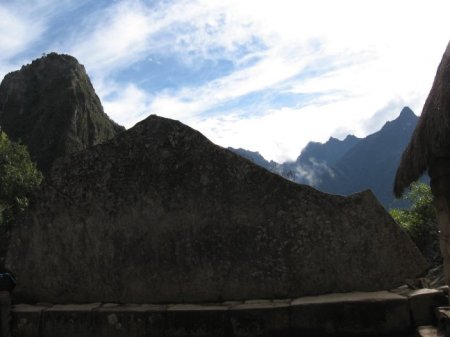 |
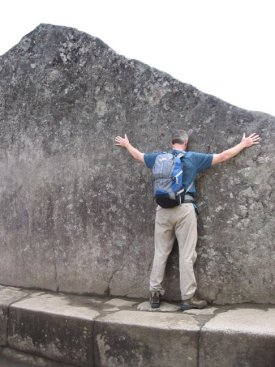 |
Here is a collection of photos of the eastern side of the complex, crowded with structures.
 |
 |
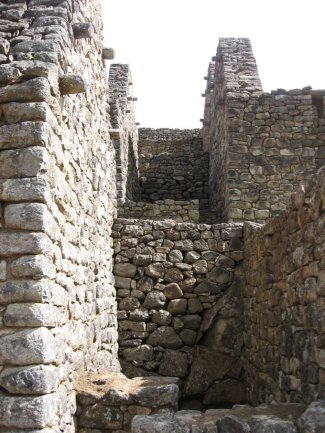 |
Here is a shot from the "urban sector" buildings toward the single Machu Picchu tree, and another one, showing more of the tree.
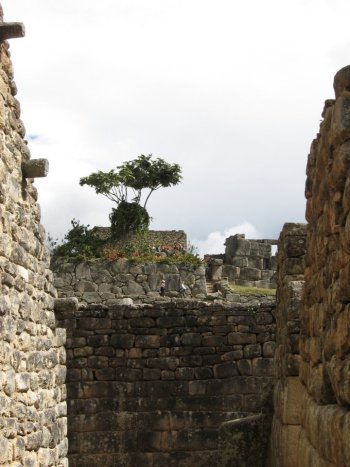 |
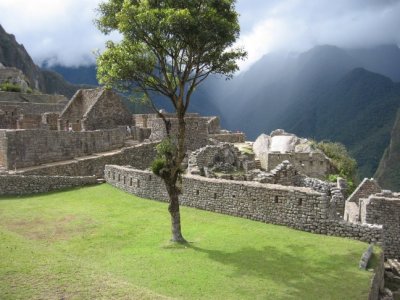 |
An interesting and particularly mystifying room in this area contains the stones shown below. They are called "mortars" because they resemble objects used by indigenous peoples in the nearby mountains to grind grain. But whether that is what these stones were used for is not known, just one of many archeological questions about Machu Picchu.
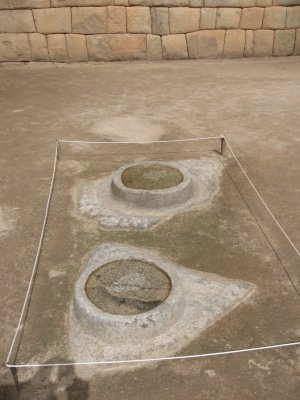
Even more elaborate stonework is in evidence in the "Temple of the Condor," whose somewhat abstract rendering of a condor in flight is a wonderful example of Inka artistry. Don't just look at the rocks on the floor of the enclosure, the rocks of the walls represent the bird's wings.

The last major structure we visited was the Temple of the Sun, whose impressive curved wall echoes the one at Coricancha in Cusco.
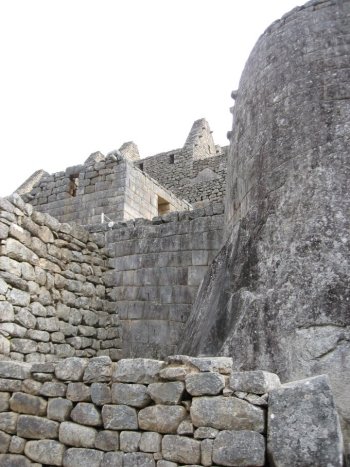 |
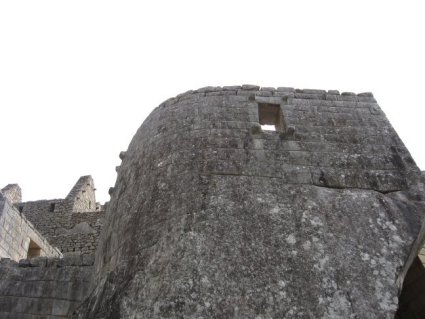 |
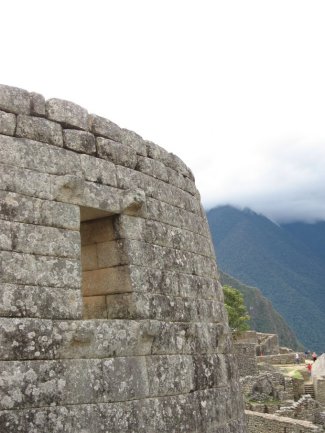 |
But this structure is remarkable not only for the amazing stone work of its outer walls, integrated so expertly with the natural rock. Inside, you find this treasure, a cave guarded by what our guidebook calls the "hint of five steps," carved out of the rock in situ. The purpose of the cave and the step carving is unknown. Hiram Bingham, Machu Picchu's discoverer, called it a "tomb," but no remains were found there.
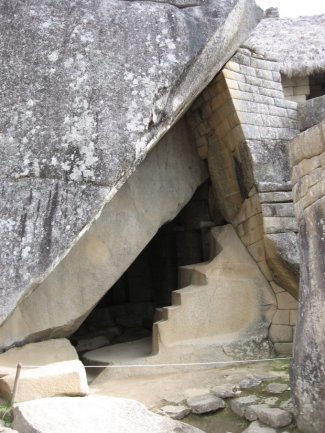 |
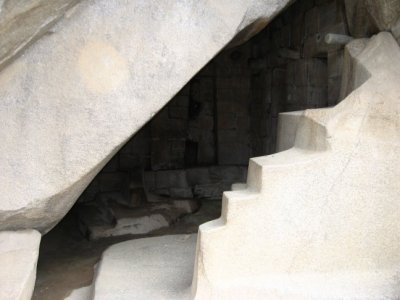 |
Here is a wonderful shot that shows the overall structure of the Temple (the cave is on the lower level, below the curved wall shown so well here). Also, this is where we bid adiós to Hernán, who had to hurry down to Aguas Calientes and catch his train back to Cusco. He must have been confident we could find our way out of the complex and back to the bus without him!
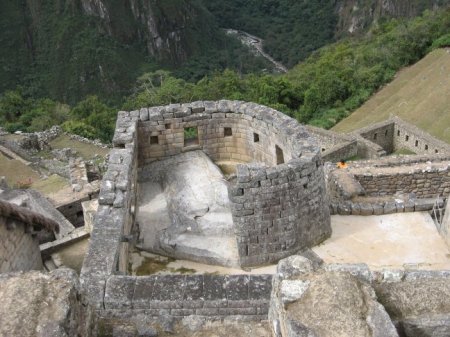 |
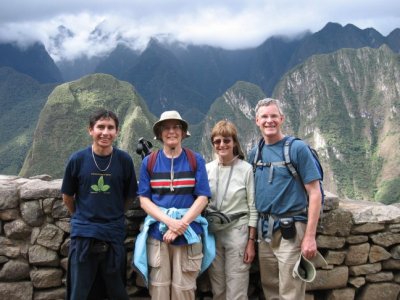 |
Machu Picchu's fountains are located in the sector we went through last before exiting. On the left below is a picture of one of them, as well as another example of amazing Inka masonry, and series of (what I believe were) agricultural terraces, leading up to the path to the exit.
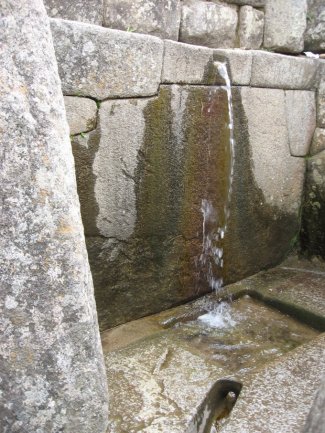 |
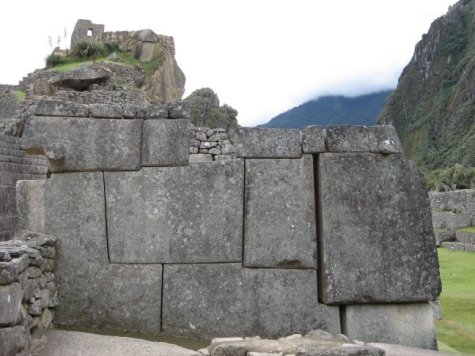 |
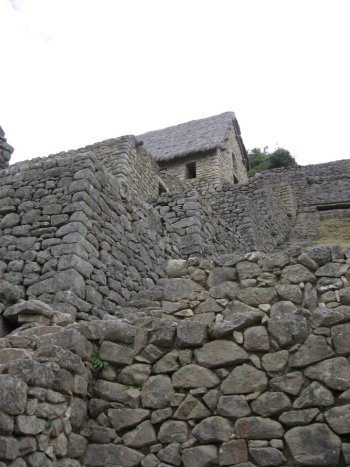 |
 Back to main page Back to main page |
Back to Machu Picchu index page  |
All photos, unless otherwise credited, are © by Henry J. Amen III. Please do not use without permission.